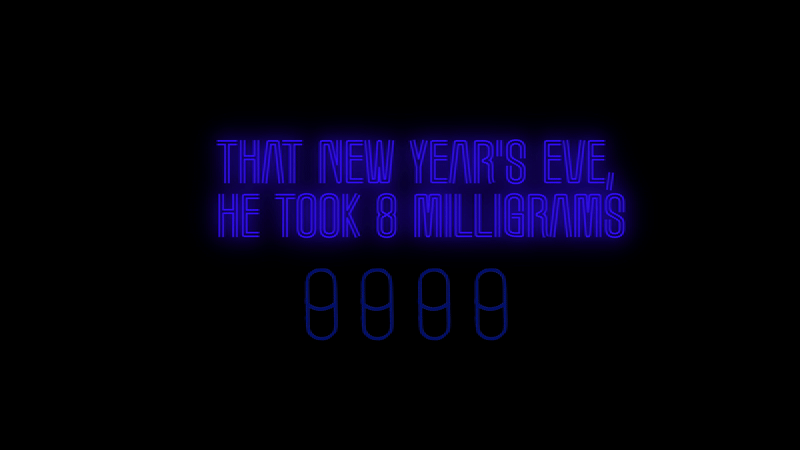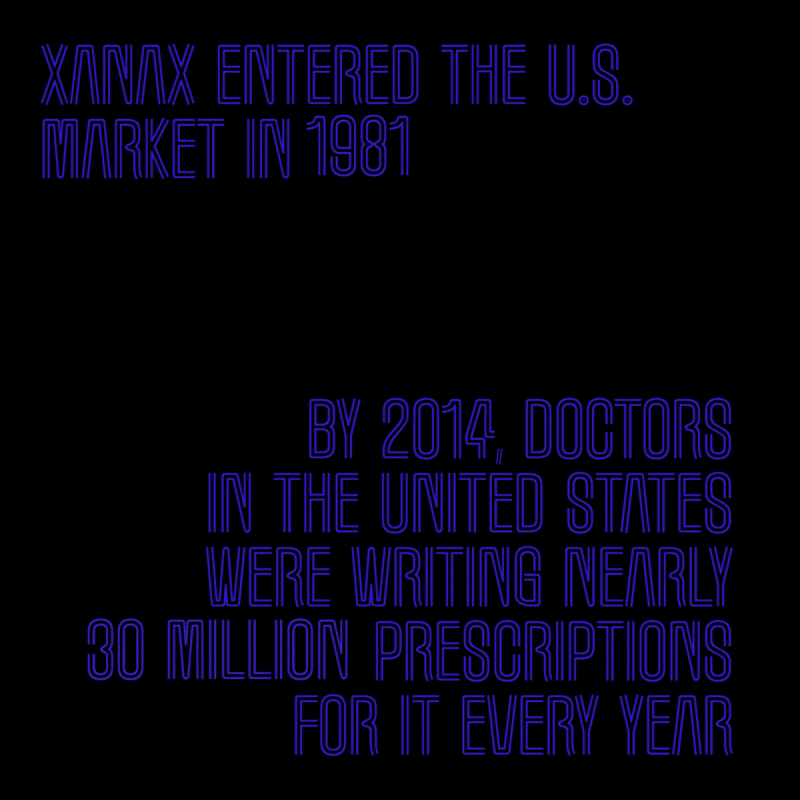It was New Year’s Eve four and a half years ago, and Jon Walters had gone to a party 30 minutes from his family home in Newport Beach with some friends he’d met at college. He was a freshman on USC’s water polo team, which had won the national championship three weeks earlier. It was a tough win, a thriller in double overtime against the Pacific Tigers from the University of the Pacific.
Now, as the year 2013 and his first semester in college were coming to a close, it was time to celebrate.
There was Champagne on the table, and as the party picked up, Jon called his brother, James, a senior in high school, to join the festivities. He did, and so the brothers, who were planning to play water polo for USC together the next season, began celebrating the new year together.
As the party wound down, Jon offered James his spot on the bed and volunteered to take the uncomfortable couch inside his college friend’s house. Jon had been a diagnosed insomniac for years, and despite the long, exhaustive night, he couldn’t help but stay awake as everyone else went to sleep. He started watching a movie, trying to occupy himself with something.
 Jon was still awake, caught in the agony of his insomnia as the all-too-familiar pattern of restless nights followed by total exhaustion began to unfold once more.
Jon was still awake, caught in the agony of his insomnia as the all-too-familiar pattern of restless nights followed by total exhaustion began to unfold once more.
He reached for his pill case, popped it open and took a Xanax.
Jon had been taking Xanax since his junior year of high school. His doctors had prescribed him the medication, 2 milligrams a day, to be taken in rotation with Ambien and Restoril. All three drugs can be prescribed to treat insomnia. By his freshman year in college, Jon’s body had become so accustomed to, even comfortable with, Xanax that one pill didn’t give him that sense of drowsiness anymore. So he started taking more. When James woke up the next morning around 10, he found his brother unresponsive. Jon wasn’t moving. His respiratory rate had slowed to about six breaths per minute. James called 911.
When James woke up the next morning around 10, he found his brother unresponsive. Jon wasn’t moving. His respiratory rate had slowed to about six breaths per minute. James called 911.
Two nights later, Jon, still in intensive care, woke up. His family had initially been told he wouldn’t make it, but now, things began to look up. Jon’s liver and kidney were still not working correctly, so doctors decided to pump intravenous fluid into his body to reset the kidney’s function.
It didn’t work. Instead, Jon’s lungs flooded.
At 3:35 p.m. on Jan. 8, 2014, Jon died of a heart attack at the Western Medical Center in Santa Ana when his body could no longer fight the damage that the Xanax, mixed with the alcohol that was still circulating through his bloodstream when he took the pills, had done to his organs.
He was 19.

When newspapers first reported Jon Walters’ death, there was barely any mention of Xanax. To many people, Jon’s story is one of tragedy first, not of prescription medications and the dangers they can pose. After all, a college kid with a bright future — a prospect for the 2016 U.S. Olympic water polo team — had died. Two parents lost their son, a brother lost his closest friend, a school lost one of its most promising student athletes.
For most of my time in college, I wasn’t sure what exactly Xanax was and how it worked. I knew that my roommate had been prescribed the medication in the past, and I’d heard other students talking about how they’d blacked out on Xanax. Once, I saw a friend trade her Adderall pills for a bar, or 2 milligrams, of Xanax.
I started to ask my friends about Xanax, curious whether they’d ever taken it. (I never have.) One student told me she’d once taken Xanax from her mother’s medicine cabinet for a long flight. Another told me he’d taken the drug three times as an “emergency” solution when his anxiety had gotten the better of him.
Of the more than a dozen students I interviewed, most were not deliberately courting trouble. Many students see others taking Xanax and thus assumed that, more often than not, they’ll wake up the next morning and shrug it off with a laugh. What a wild night that was. Let’s do that again.
It wasn’t until I started researching for this article that I came to grasp the extent to which Xanax is abused, normalized and sold on college campuses. On a typical Saturday night, college students come across someone on Xanax at pretty much every party. In an environment where drugs and drinking go hand in hand anyway, a bar of Xanax, chugged with a couple of beers, could quickly turn into a deadly cocktail or begin a cycle of addiction that sucks young adults in faster than weed, alcohol or even nicotine ever could.
“We used to take it to black out and then figure out what we’d done the next day,” a friend told me. He’d taken the drug repeatedly with his group of guy friends, purposefully mixing it with alcohol. The recollection of lost memories, puzzled together by text messages and photographs, became some kind of game for them. “I didn’t realize how dangerous it was at the time,” he said.
Another friend told me he’d popped a Xanax once after drinking eight or nine glasses of wine. He remembers throwing up and then suddenly becoming incapable of controlling his bodily movements. His roommate helped him into bed. “I should’ve probably gone to the emergency room instead,” my friend told me.

“Xanax is really something that ought to be prescribed for very short-term use — for a week because something terrible happened,” Dr. Robert Mendola, USC’s executive director for student mental health, told me.
Xanax, or Alprazolam, as its generic version is called, falls into a drug category called benzodiazepines. It binds to receptors in the brain called GABA receptors. “When you stimulate this inhibitory spot, things relax,” Mendola explained. It’s known that Xanax shouldn’t be combined with other drugs, especially not with alcohol, which binds to the same receptor and enhances its effect drastically — to the point where, as Mendola put it, “you block your brain’s message for your lungs to breathe.” Today, it’s the most commonly prescribed psychiatric medication.
Today, it’s the most commonly prescribed psychiatric medication.
But the effects that Xanax has on college students specifically aren’t studied. USC doesn’t keep track of how many students are prescribed Xanax in its student health centers, Mendola said.
No expert I spoke to could cite data on how many students are taking Xanax across the United States. The drug flies under the radar of academic and health officials, and unless you’re on campus yourself — like I am —it’s clear Xanax prospers in an environment that both serves as a breeding ground for mental health issues and might rank among the most tolerant when it comes to drug use and abuse.
Piecing together recollections of my peers — I interviewed more than a dozen who had taken Xanax — and the sparse findings among the academic community still isn’t a representative study of the appeal Xanax enjoys among college students. But it’s the only way to tell this story.
I called Gregory Tau, a psychiatrist for children and adolescents, and a professor at Columbia University. While he sees the effects that Xanax has on young adults in his clinic, he acknowledged that “it’s more studied in adults, probably because it’s less common [among young adults], and because there’s a more-common-substances focus — nicotine, alcohol, marijuana.” But Tau also said that just because it’s not researched doesn’t mean it’s not dangerous.
Xanax, Tau said, is “very, very addictive relative to marijuana and alcohol. A person can develop a physiological dependence with daily use over the course of a week — maybe less.” And while withdrawal symptoms from marijuana, or even opioids, can be “uncomfortable,” he said, Xanax withdrawal can lead to seizures “and worse.”

When I met Sam Connor at a fraternity party our freshman year, he was tall and skinny, with a fresh tattoo of a carp on his back. I thought of him as a troubled rebel at heart. At parties, he’d be smoking outside sharing thoughts of exceptional bluntness rather than dancing in the middle of the crowd, and every conversation we had would sooner or later revolve around music. When he first mentioned that he was taking Xanax, I didn’t think much of it.
That was four years ago. Sam is a senior now. When I asked to interview him last year, he told me he’d been struggling with the drug, that he’d become addicted within two months when he first started taking it. He told me he had gone to rehab, only to relapse and repeat the cycle anew. At the time of our conversation in mid-November, he had been clean for a year and a half, a time during which he’d neither been drinking nor taking any other drug.
Sam told me that he’d never been prescribed Xanax. “I just knew dozens of people with prescriptions who would just, like, sell it. I mean, at college, it’s literally everywhere,” he said.
On the black market at USC — and on dubious websites buried in the depths of the internet — Xanax sells for about $3 a pill. That’s cheaper than Adderall, which typically goes for about $5 a pill on campus, and only a fraction of what opioids, such as Oxycontin, are worth. For college students on a budget, Xanax is an easy purchase.

What is it about Xanax that makes students take it so casually and sell it so nonchalantly?
“What in this world,” James Walters said back when we talked about his brother’s story, “could be bad that’s given to you by a doctor, that is there to save your life, to help you with problems, to cure you?”
Jon hadn’t been selling Xanax, nor had he been taking it recreationally. James doesn’t blame doctors for his brother’s death, but he said there’s something about the ease, the routine, with which Jon was taking his medication that’s reflected in college students’ relationship to Xanax. “That’s the thing,” James said. “You’re prescribed these pills, and you become very comfortable with them because you take them every night. And it’s a shame that it seems so innocent, so harmless, when really if you’re not careful with it, it could kill you.”
On college campuses, this dangerous comfort manifests itself in students’ attitudes toward Adderall, a prescription medication used to treat attention deficit hyperactivity disorder, more commonly known as ADHD, in children and adults.
The drug increases its user’s focus and blends out distractions, making it the perfect enhancer for a college student’s late-night cramming session and thus much more likely to be abused than Xanax. (No one I spoke to ever tried writing a paper while on Xanax.) There have been articles describing the emotional and physical effects of Adderall dependence on college students, sometimes from reporters who themselves had fallen under the drug’s spell. In contemporary culture, Adderall is taken so casually at college libraries and in computer labs that it’s hardly considered dangerous by any student I know. In college, it’s like smoking weed — pretty much everyone just does it, without even giving it the consideration of an afterthought.
But if Adderall is marijuana, Xanax is cocaine — its darker, rarer, more dangerous brother, associated with getting even higher, being that kid at the party that dares to go further.
In pop culture, Xanax, in recent years, has experienced an incredible rise in glorification. Gregory Tau of Columbia University, when he was preparing to give a talk on Xanax use among college students, was surprised “by how much reinforcement there is in popular culture, especially in music.” The rapper Future refers to his party crew as “xanny family.” Hip-hop performer Lil Pump calls Xanax “the wave.” Dozens of other musicians have written songs about Xanax, praising it for its numbing effects. “Sky might fall, but I ain’t worried at all/Got me some xannies and a couple adderall,” Kid Cudi sings in “Lord of the Sad and Lonely.”
Xanax isn’t supposed to be a long-term solution. At USC’s health centers, Mendola told me, it’s prescribed only in emergency cases, at a low dosage, and for 10 days maximum. “We would then revisit the student to see if the situation resolved.”
As with many medications, Xanax primarily treats symptoms, not causes. It suppresses feelings of anxiety, but it doesn’t cure their causes. Three students with Xanax prescriptions told me they’re seeing a therapist as well — to fix what Xanax can’t in the long run. Still, Americans have a track record of becoming comfortable with prescription medication.  All European countries together, with more than twice the population of the U.S., generated $181 billion. In 2013, almost 17 percent of Americans were regularly taking antidepressants, sedatives or other psychiatric drugs prescribed to them by their doctors. Xanax falls into that category, although it’s only a small fraction of it.
All European countries together, with more than twice the population of the U.S., generated $181 billion. In 2013, almost 17 percent of Americans were regularly taking antidepressants, sedatives or other psychiatric drugs prescribed to them by their doctors. Xanax falls into that category, although it’s only a small fraction of it.

“I can’t really remember a time where I was taking it responsibly,” Sam Connor told me about his Xanax experience. “Take, like, a couple of bars and you’re set for the night. I’d be fucked up until I woke up the next morning.”
The last time he went into rehab, a little more than two years ago, he detoxed for 10 days until the Xanax he’d taken was completely out of his system. He doesn’t remember those 10 days, he said — Xanax can affect your memory — but once the medication was completely out of his body, his anxiety was worse than before. “And I’ve always been an anxious guy,” Sam said. “But never, like, debilitating anxiety.”
Weeks of insecurity followed, during which he was neurotic and spastic and had trouble sleeping or going out in public. Sitting in class or talking to people for long periods of time became ordeals, he said. He fulfilled the minimum requirements to stay in school. As time passed, things got better.
“Withdrawing from Xanax is extremely painful almost 100 percent of the time,” Sam said. “But there’s not really an easy way.”

“Xanax is not going to be the No. 1 abused drug,” Gregory Tau said in reference to college students, “but that’s not to say it’s not serious.“
“Many kids have gotten into accidents and other dangerous situations, have been sexually assaulted when they blacked out,” he said. “It’s not something people anticipate at all because they don’t really know what they’re dealing with. The line between the high and the risk is very narrow.“
Kathleen Parks, a behavioral psychologist at the University of Buffalo, has likewise studied Xanax use and students’ risky behavior. When she started a focus group to explore a potential relationship between benzodiazepines and sexual assault among college students, she heard from young women who had mixed benzodiazepines and alcohol, passed out and didn’t know what had happened to them for six to eight hours. “They were just ripe for being sexually assaulted,” Parks said. (The focus group didn’t focus on Xanax exclusively — it included all benzodiazepines, which have similar effects.)
It’s not that students don’t know that they’re not supposed to mix Xanax with other substances. Vasi Best, a USC student from Palos Verdes who has a Xanax prescription, told me about a kid from her hometown who died after mixing Xanax with other drugs. “My friends, they were super upset,” she said, “but I don’t think they think it could happen to them. Because they still do it.”
Mendola of USC knows that story line well. “In the early 20s, and teens, people kind of feel invincible,” he said. “So when someone says this can kill you, you’re, ‘Meh, not me.’”
Could educating students more make a difference?
Mendola said USC’s vice president is in the process of creating a seminar for first-year students to educate them about “some of the most basic health items including binge drinking and substance abuse.” He says that the forum could be a way to “get the message out.”

James Walters promised himself that he’d never touch alcohol or any pill again after his brother died. “I realized that wasn’t really the answer for me. It was just kind of to be more careful with things,” he said. He’s started drinking alcohol again after a couple of months, although not excessively.
With the pills, however, he kept his promise. Despite two hip surgeries, he hasn’t taken any painkillers, just the anesthesia his surgeons gave him. He plans to keep it that way.
“I just don’t think anyone understands how powerful these pills are and how innocent they seem.”